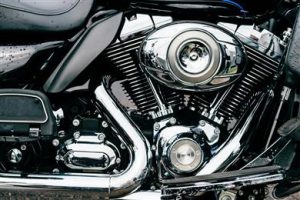 Geleen (NL), 17 July 2019 – Royal DSM, a global science-based company in Nutrition, Health and Sustainable Living, will showcase some of its latest purpose-led innovations at K2019, the world’s premier fair for the plastics and rubber industry, in Düsseldorf, Germany, between 16 and 23 October 2019. Exhibiting under the theme of ‘Bright Science. Brighter Living’ – at hall 6, booth 11 – DSM will show how it is using its science-based competences to develop innovations to both address the needs of its customers and tackle the world’s major challenges. Some of these innovations are detailed below.
Geleen (NL), 17 July 2019 – Royal DSM, a global science-based company in Nutrition, Health and Sustainable Living, will showcase some of its latest purpose-led innovations at K2019, the world’s premier fair for the plastics and rubber industry, in Düsseldorf, Germany, between 16 and 23 October 2019. Exhibiting under the theme of ‘Bright Science. Brighter Living’ – at hall 6, booth 11 – DSM will show how it is using its science-based competences to develop innovations to both address the needs of its customers and tackle the world’s major challenges. Some of these innovations are detailed below.
Metal replacement for electric vehicles
With growing demand for electric mobility, electromagnetic interference (EMI) shielding and thermal management are increasingly important in delivering high-quality automotive electronic systems. In particular, metal enclosures house electronic control units, or power and battery management modules, protecting these elements from both heat and mechanical damage. Nevertheless, these conventional metal housings are heavy, driving fuel consumption and carbon emissions in case of pure combustion or hybrid cars and traction and driving experience in case of pure electric cars. DSM’s portfolio of conductive plastics enables the replacement of full-metal enclosures, with shielding efficiencies of around 40-60dB of plastic thickness, which protect from EMI, and can lead to weight reductions of up to 50%.
Akulon® RePurposed: Recycled polyamide from discarded fishing nets
DSM and Starboard came together when the surfboard company selected DSM’s Akulon® RePurposed, where the resin used is fully recycled from discarded nylon-based fishing nets and is known for its sustainability profile as much as its performance. The discarded fishing nets are gathered from the Indian Ocean and Arabian Sea and are given a new lease of life as fins, fin boxes, standup paddleboard pumps, and other structural parts in surfboards. The product can be applied in many other applications and is specifically targeted at the sports and leisure market.
Arnitel® E-TPEE in sustainable, high-performance athletic footwear
In recent years, the athletic sportswear industry has increasingly integrated high-performance materials to deliver higher durability, stability and functional performance without compromising on weight. DSM’s expanded Arnitel® co-polyester (E-TPEE) can be used in mid-soles of athletic footwear to deliver a range of performance advantages:
- Very high rebound rate of 75-80%, compared to 65-70% other materials such as E-TPU at same densities
- Consistent performance across diverse climates; Arnitel® has a high consistency in modulus across temperatures from -25°C to +50°C
- Arnitel® enables circularity when designing an all-polyester solution for upper and sole materials, including the adhesives
Arnitel® in non-pneumatic tires
The market for non-pneumatic tires, or flat-free tires that are not supported by air pressure, is being driven by the need to integrate higher levels of sustainability, durability, efficiency and reduced costs. Arnitel®, a family of high-performance thermoplastic elastomers (TPE), offers a unique combination of flexibility, high temperature resistance, strength and processing characteristics. As such, Arnitel® is increasingly being used as a lighter, smarter, greener alternative to conventional rubbers, reducing environmental impact and, ultimately, system costs.
Reinventing the wheel with Arnitel®: Non-pneumatic tires that don’t go flat youtu.be/UoHM_7f_Tv8
Additive manufacturing for automotive spare parts, low volume and customized production
Additive manufacturing (AM) is quickly evolving from prototyping into mainstream production, opening up a wide range of new horizons across many industries. The digital production technology enables new designs and applications, as well as reducing inventories, process waste, transportation cost and carbon footprint. DSM has pioneered additive manufacturing for over 25 years, and at K2019 will be outlining opportunities of AM for automotive OEMs. From creating vehicles produced in comparatively low volumes to individual requirements and tastes, to production of spare parts – an area with huge potential as it could help reduce inventory, typically 7% of an automotive OEM’s liquid assets. However, AM is used though, cost-cutting and carbon footprint reduction are uppermost in the minds of the users. More information you will find in the article about the trends in automotive for additive manufacturing.













